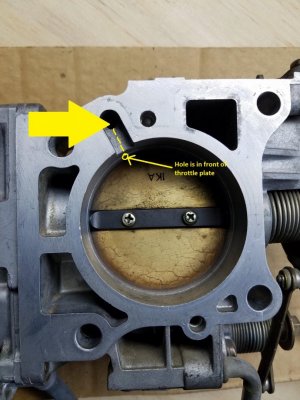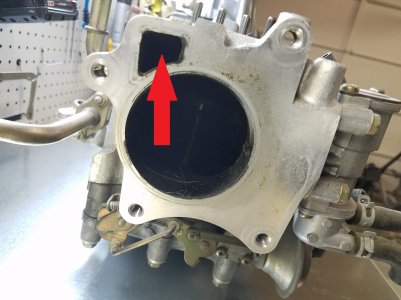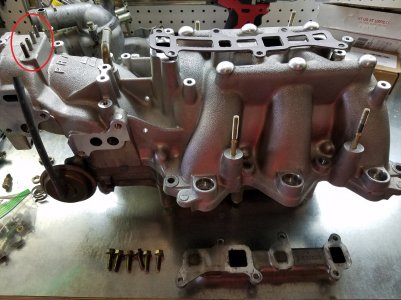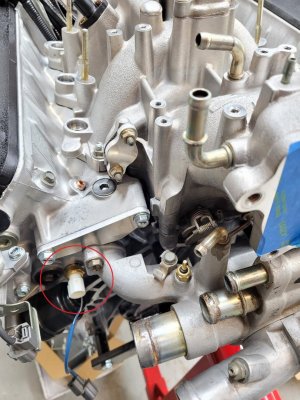Alrighty - not so brief history - am restoring a 91 that has sat for the last 8 years - a high mileage A/T (212K miles). "Car ran fine when parked...lol"
Tons of restoration work - but here is what I did with engine....
New timing set/water pump.
Rebuilt alternator
new AC compressor
seals, plugs, vtec seals and filters and pretty much all maintenance you would do with engine out.
Got car running easily - but didn't do an amazing job of holding an idle... Would stall
Cleaned out idle air control valve - wasn't horrific but it helped...
Car now holds idle but has three symptoms. Shifts relatively hard and wont downshift at WOT AND the idle when warm hunts around (550-1300). Engine also had a stutter at mid RPM....
So I replaced injectors with rebuild and put new coils on. This solved the stutter completely but idle still hunts...
So I took apart and thoroughly cleaned throttle body. I tried setting idle per the manual and could not really get idle above 550 RPM with the IACV unplugged. No amount of idle screw setting would get me there. Also, is all my trials here now I have a new CEL that will not reset... code 7 which manual says is the TPS...
But... I thought, lets check her out at the smog station... Well, I live in CA and it wasn't even close. Hydrocarbons and CO2 elevated.
Since I am the proud owner of a parts cannon I grabbed 2 new CATS from science of speed and 2 new 02 sensors.... Smog tests improved but wont pass. Holy crap were those O2 sensors brutal to remove....
Purchased a TPS and awaiting its delivery. I did check TPS with voltmeter and it seemed within spec (.55V - 4.8V), but I cannot do the thorough test via manual as I do not have the ECU service jumper cable thingy... Oh, and thanks manual, I don't have a known good ECU to swap...
Haven't touched the EGR or the AIT (air intake temp) sensor.
What on earth do I try next? Need this idling smooth when warm and THEN I need it to pass smog lol.....
Chris
Guessing the engine hunting at idle is first order of business as I presume that would make engine run rich at smog test...
Tons of restoration work - but here is what I did with engine....
New timing set/water pump.
Rebuilt alternator
new AC compressor
seals, plugs, vtec seals and filters and pretty much all maintenance you would do with engine out.
Got car running easily - but didn't do an amazing job of holding an idle... Would stall
Cleaned out idle air control valve - wasn't horrific but it helped...
Car now holds idle but has three symptoms. Shifts relatively hard and wont downshift at WOT AND the idle when warm hunts around (550-1300). Engine also had a stutter at mid RPM....
So I replaced injectors with rebuild and put new coils on. This solved the stutter completely but idle still hunts...
So I took apart and thoroughly cleaned throttle body. I tried setting idle per the manual and could not really get idle above 550 RPM with the IACV unplugged. No amount of idle screw setting would get me there. Also, is all my trials here now I have a new CEL that will not reset... code 7 which manual says is the TPS...
But... I thought, lets check her out at the smog station... Well, I live in CA and it wasn't even close. Hydrocarbons and CO2 elevated.
Since I am the proud owner of a parts cannon I grabbed 2 new CATS from science of speed and 2 new 02 sensors.... Smog tests improved but wont pass. Holy crap were those O2 sensors brutal to remove....
Purchased a TPS and awaiting its delivery. I did check TPS with voltmeter and it seemed within spec (.55V - 4.8V), but I cannot do the thorough test via manual as I do not have the ECU service jumper cable thingy... Oh, and thanks manual, I don't have a known good ECU to swap...
Haven't touched the EGR or the AIT (air intake temp) sensor.
What on earth do I try next? Need this idling smooth when warm and THEN I need it to pass smog lol.....
Chris
Guessing the engine hunting at idle is first order of business as I presume that would make engine run rich at smog test...










